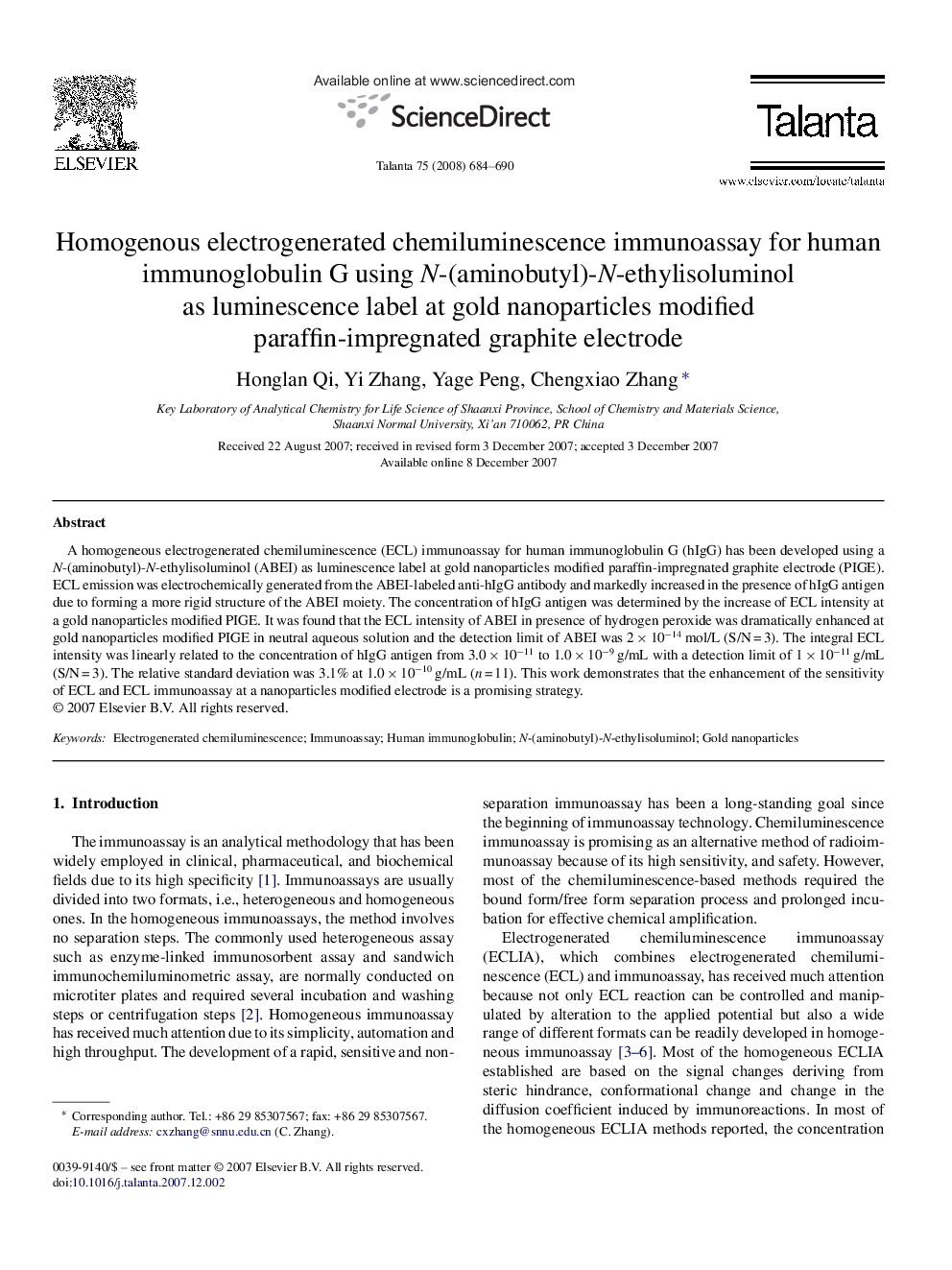| Article ID | Journal | Published Year | Pages | File Type |
|---|---|---|---|---|
| 1245573 | Talanta | 2008 | 7 Pages |
A homogeneous electrogenerated chemiluminescence (ECL) immunoassay for human immunoglobulin G (hIgG) has been developed using a N-(aminobutyl)-N-ethylisoluminol (ABEI) as luminescence label at gold nanoparticles modified paraffin-impregnated graphite electrode (PIGE). ECL emission was electrochemically generated from the ABEI-labeled anti-hIgG antibody and markedly increased in the presence of hIgG antigen due to forming a more rigid structure of the ABEI moiety. The concentration of hIgG antigen was determined by the increase of ECL intensity at a gold nanoparticles modified PIGE. It was found that the ECL intensity of ABEI in presence of hydrogen peroxide was dramatically enhanced at gold nanoparticles modified PIGE in neutral aqueous solution and the detection limit of ABEI was 2 × 10−14 mol/L (S/N = 3). The integral ECL intensity was linearly related to the concentration of hIgG antigen from 3.0 × 10−11 to 1.0 × 10−9 g/mL with a detection limit of 1 × 10−11 g/mL (S/N = 3). The relative standard deviation was 3.1% at 1.0 × 10−10 g/mL (n = 11). This work demonstrates that the enhancement of the sensitivity of ECL and ECL immunoassay at a nanoparticles modified electrode is a promising strategy.
